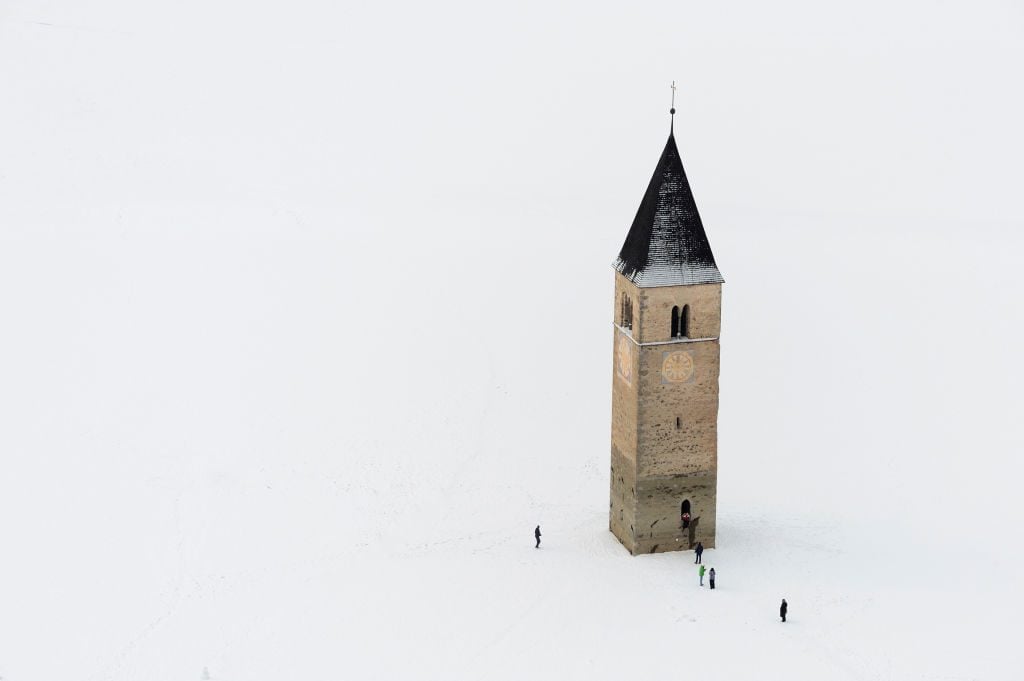Archaeology & History
A Storied Medieval Village in Northern Italy Has Literally Resurfaced 70 Years After It Was Destroyed by a Flood
The lost town recently inspired both a novel and Netflix show.

The lost town recently inspired both a novel and Netflix show.

Artnet News

In 1950, the Italian village of Curon was flooded to merge two adjacent lakes and make room for an electric plant. Since then, the only evidence of the town’s existence has been a lone 14th-century church steeple that rises, somewhat hauntingly, from the center of the man-made body of water, Lake Resia.
Until recently, that is. The state began to drain the reservoir for repairs on a nearby hydroelectric plant last month, slowly revealing the abandoned town underneath.
Today, the site, which is located just miles from the borders of both Austria and Switzerland in the southern Alps, is almost completely bone dry—and locals have taken to social media to document the medieval remains. Pictures circulating online show Curon’s water-worn walls and stone steps, eroded archways and foundations—all rivaling the site of that lonely steeple in creepiness.
#lakeresia #altoadige #südtirol #southtyrol #valvenosta #vinschgau
— Louise DM ?? ? (@AvventuraL) May 18, 2021
More than 900 people were displaced, and some 160 homes razed, when Curon was submerged, which happened despite the protests of locals. An Italian electric company oversaw the flooding, which was carried out for the purposes of creating the plant and, in turn, providing the region with electricity. The village of Curon Ventosa, which is today home to roughly 2,500 people, was created after its forebear was destroyed.
Coincidentally, the village found its way onto the radars of many for the first time last June when Netflix released Curon, a supernatural thriller that takes place in the area. Prior to that, the town was the inspiration for Resto Qui, a 2018 historical novel about a community upended by Italian and German fascism.
That the site would inspire so much fiction makes sense. Legend has it that during the coldest months of the winter, when the frozen lake can be crossed by foot, you can still hear the bells of the Santa Caterina tower ring. (In actuality, the steeple’s bells were removed a week before the flooding began.)
The process of refilling Lake Resia will begin again in the coming weeks.